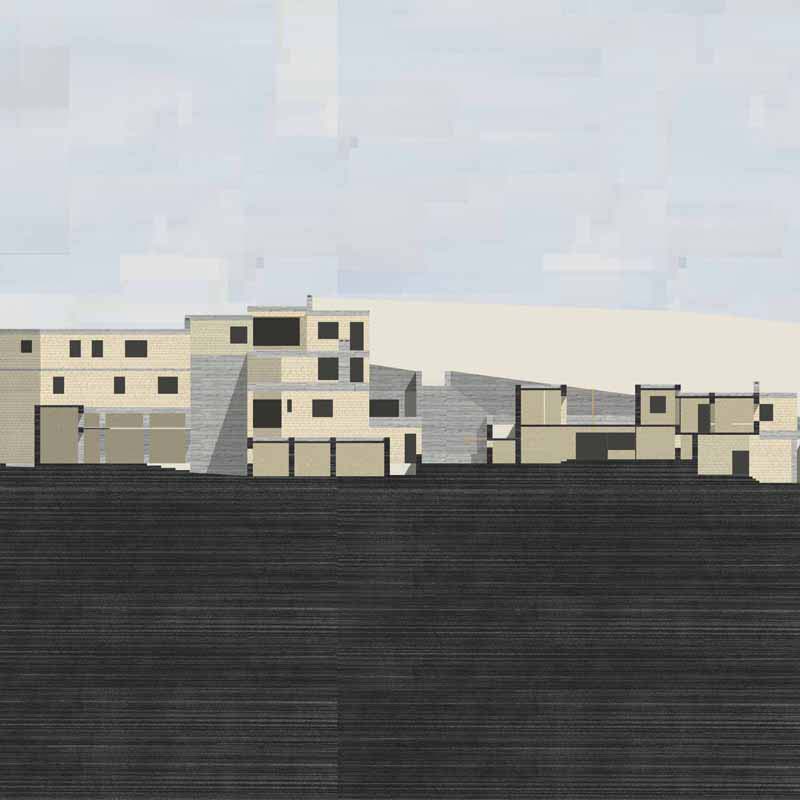



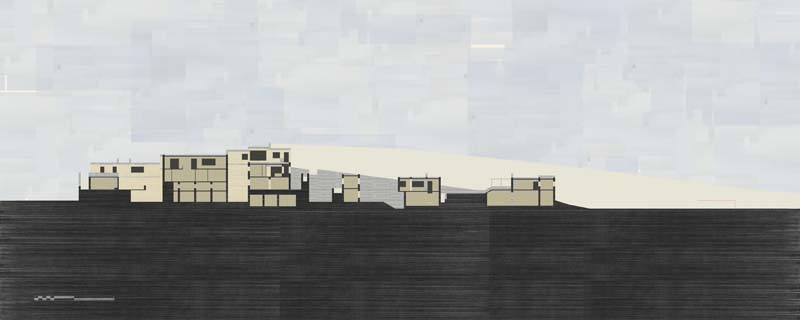



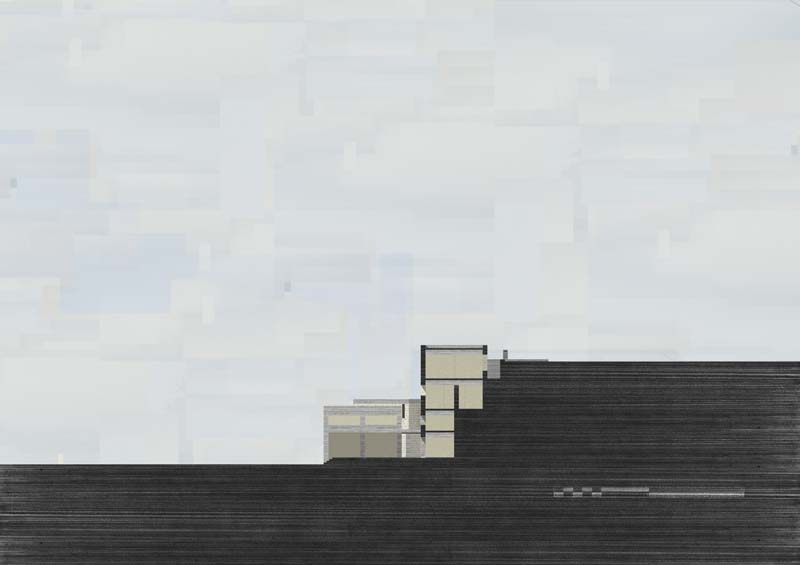

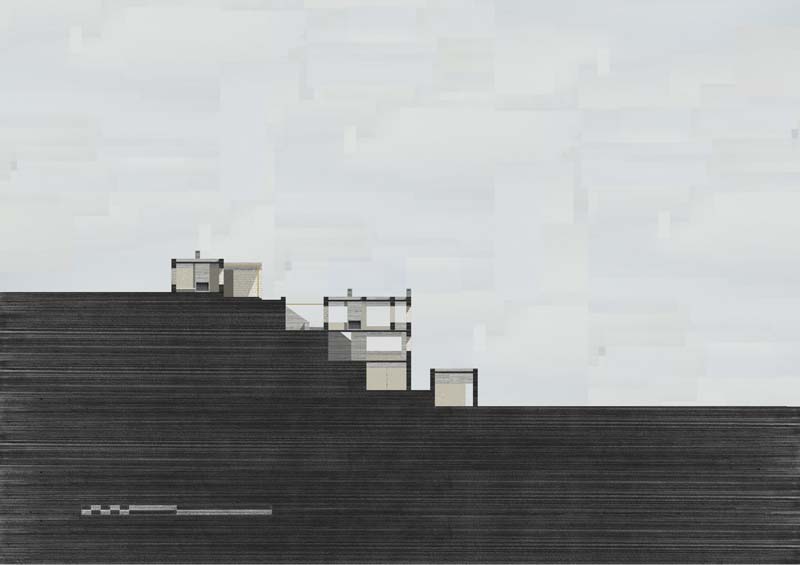

This diploma project deals with the creation of a neighborhood near the byzantine wall in the city of Salonika. The area of Eski Delik (at the present time named Kalithea), like the rest of the areas near the wall, reflects the citie's residential particularity. Spiral alleys, refugees houses, blocks of the early 70s and embellished churches create a space overtime. From the muslim groups of the 17th century and the Asia Minor distraction until the post war period and the neo-greek patents, the space remains distraughted. In the area are preserved many factors which dictate a way of living in binding relation with the wall, the outdoor space and the natural landscape within the limits of the metropolis. The project tries to define the present living terms and incorporate them in the contemporary city space rather than designing a renovation project. In other words the project proposes a way of living according to the particularities which are creating space nowadays in this area. The composition includes the creation of ten residencies, one market and different stores as well as incorporates housing and landscape with the public outdoor space. The market as the dominant public area, tries to separate itself geometrically from the rest of the intervention, while the natural space, the cliffs and rocks are now accessible. In this way the mix of natural and artificial space gives the opportunity for the users to move towards the byzantine wall.
Supervisor: Triantafillidis Giorgos
Reference Number: 567
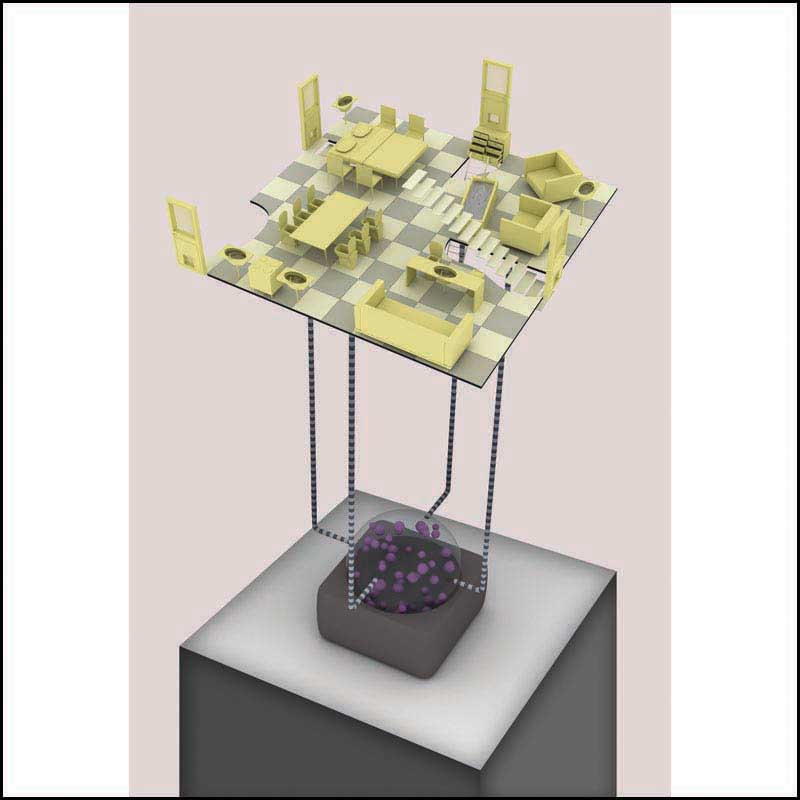

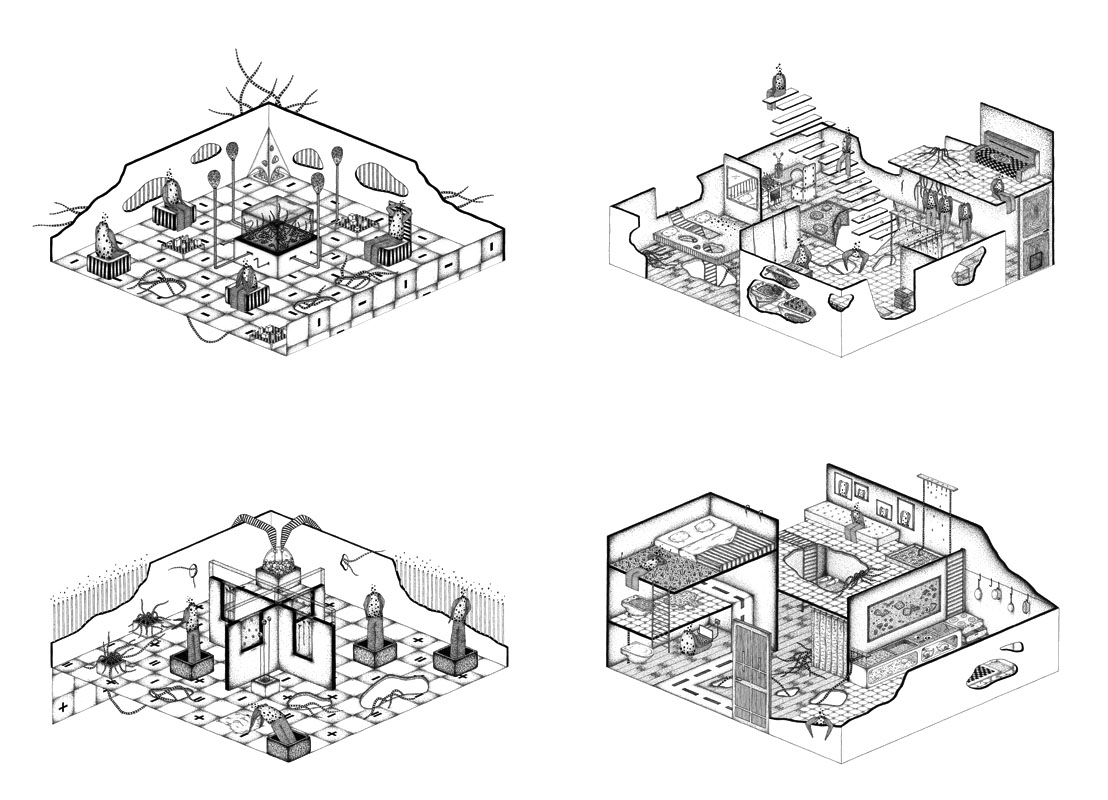

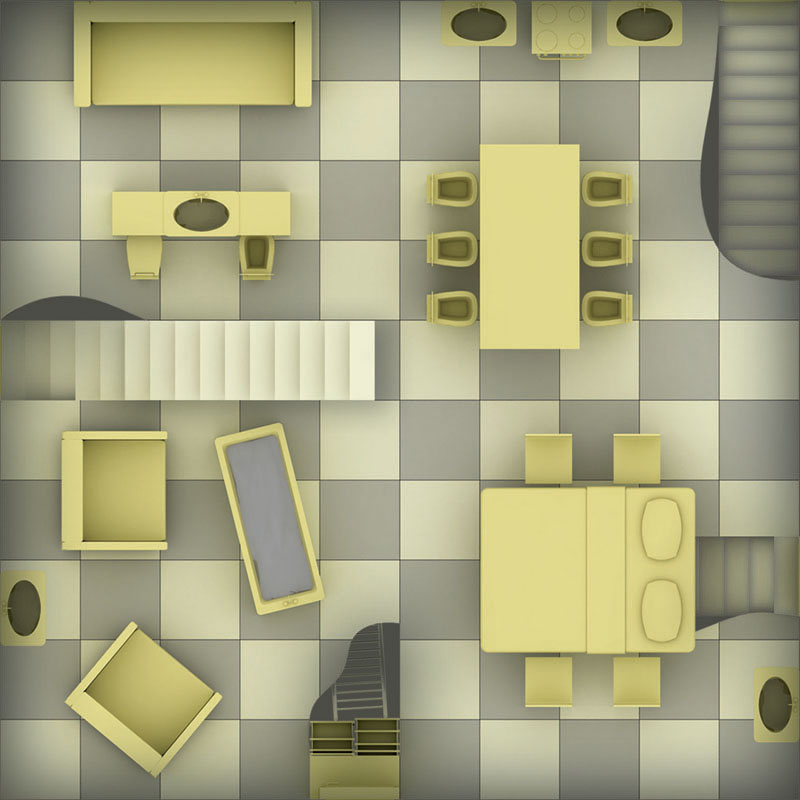



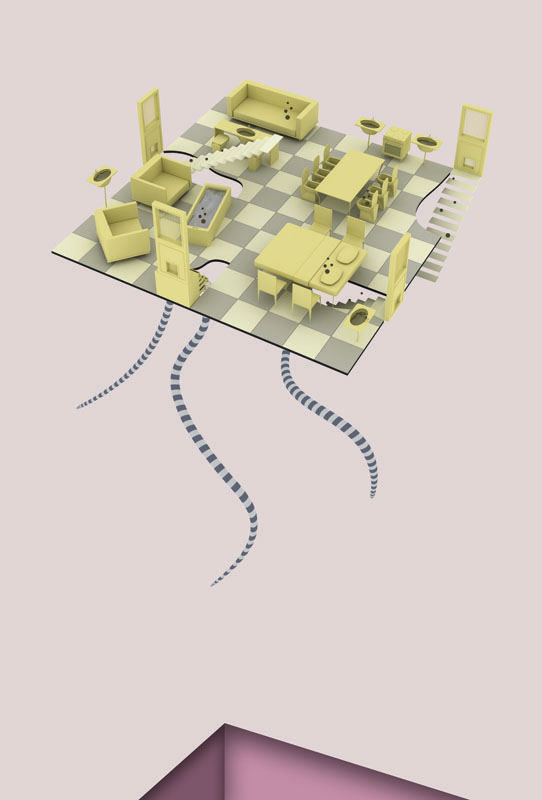

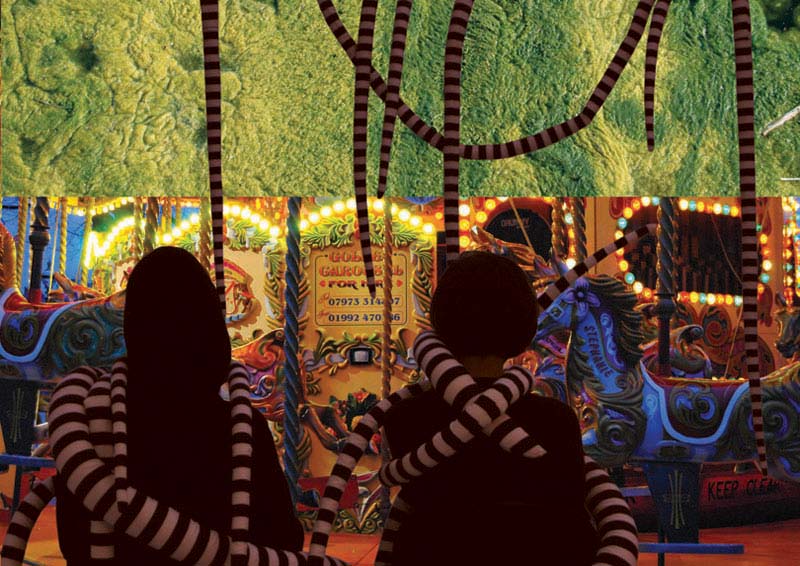

A certain authority using its persuasive law of doing managed to enforce a normative model of actions aiming to the capture of the subject into a closed, under-surveillance system. The image of the ideal way of living that imposes the concept of “believing in whatever you see” and rejects whatever non visible. The most peculiar actions are dismissed as inconceivable according to the submission to the order that denies the unacceptable and seeks the inevitable. Thereby the user succumbs to the will of believing in everybody’s belief, the imposed belief. But in this way neither the objective truth nor the subjective experience of faith are conceived because speech and reasoning are not enough. The subject by redirecting itself from passive consumer to active producer of uses holds the power of creating his own “way of doing”. Through this self-invention of “ways of doing” the user can countervail the incumbent methods that form the sociopolitical order of things. Manoeuvres and tactics that function as an entropy, embrace the opportunity in order to escape from the capture of the closed systems, creating cracks into them, unsettling them and setting them, even temporarily, open. New practices that are firstly encountered into the most immediate and familiar shelter of the person, the cosmic miniature of home. In it we can encounter uses that express non-realities that borrow the real space in order to construct in imaginary terms their own stage, start a play. The language of these practices expresses complex rationalities that can’t be described by any commonality. It represents places, non-places, unconquerable by any authority that embed in space the foreign and invisible time of concentrated heterogeneities, distorting the law of place and embodying in space the existence of the subject as multidimensional, in communication with the universe. These non-realities represent different potential realities that are actually existent but haven’t been revealed yet.
Supervisors: Kotionis Zissis, Oreopoulos Philippos
Reference Number: 545
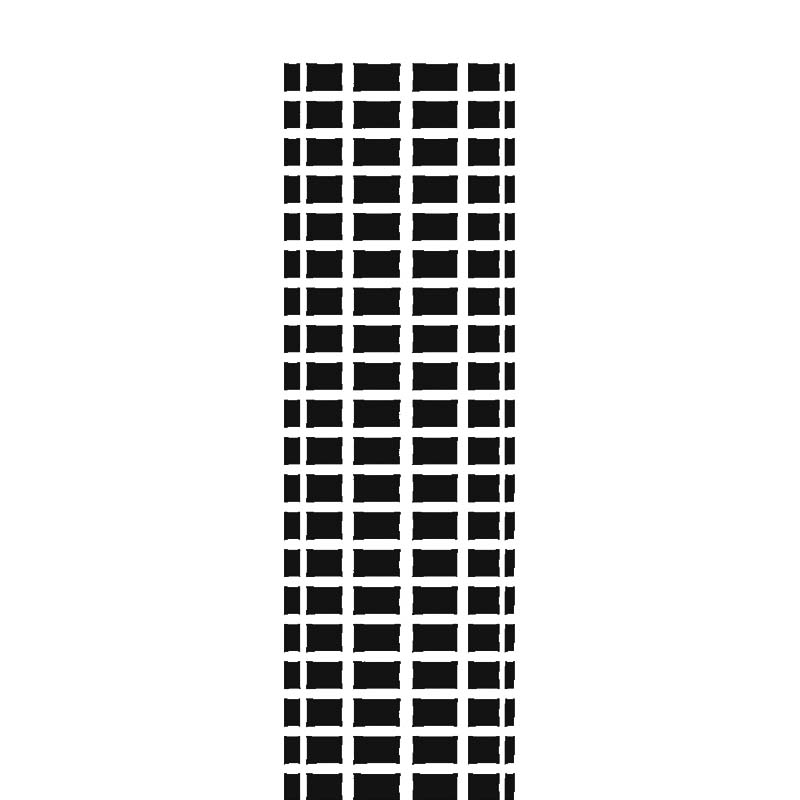



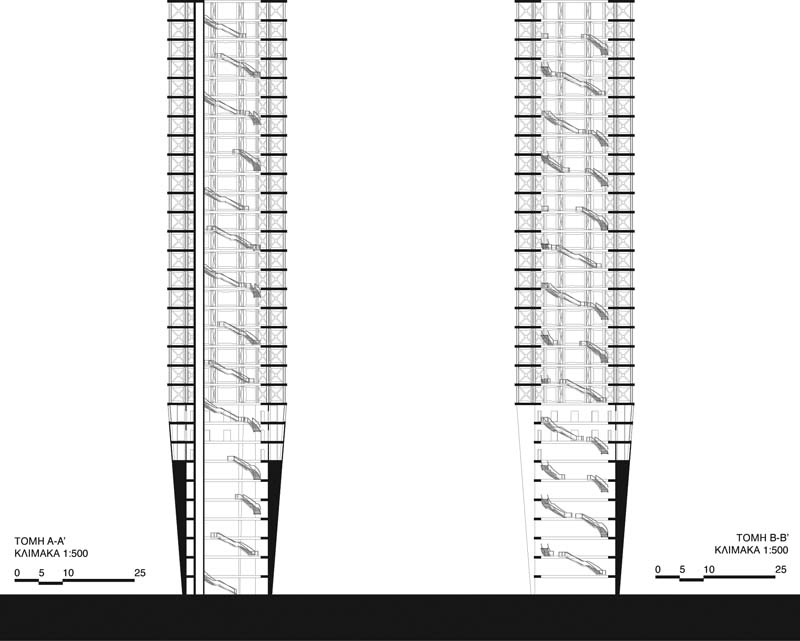



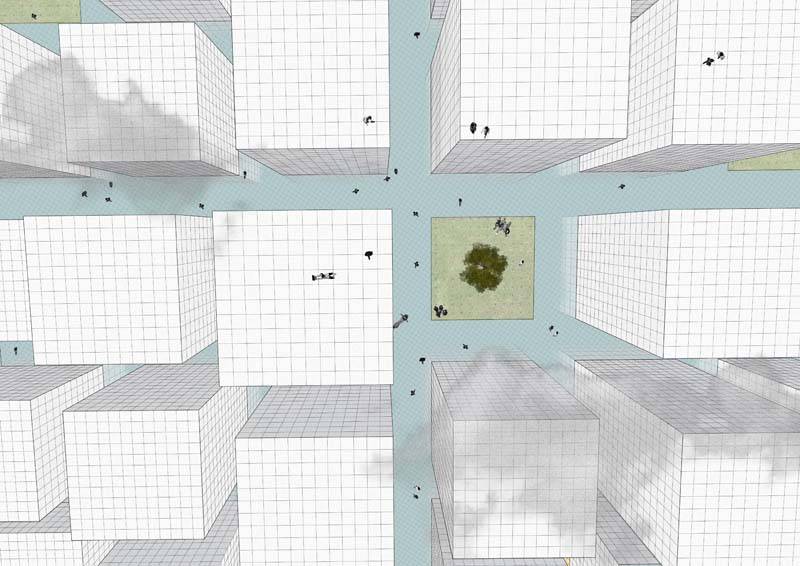

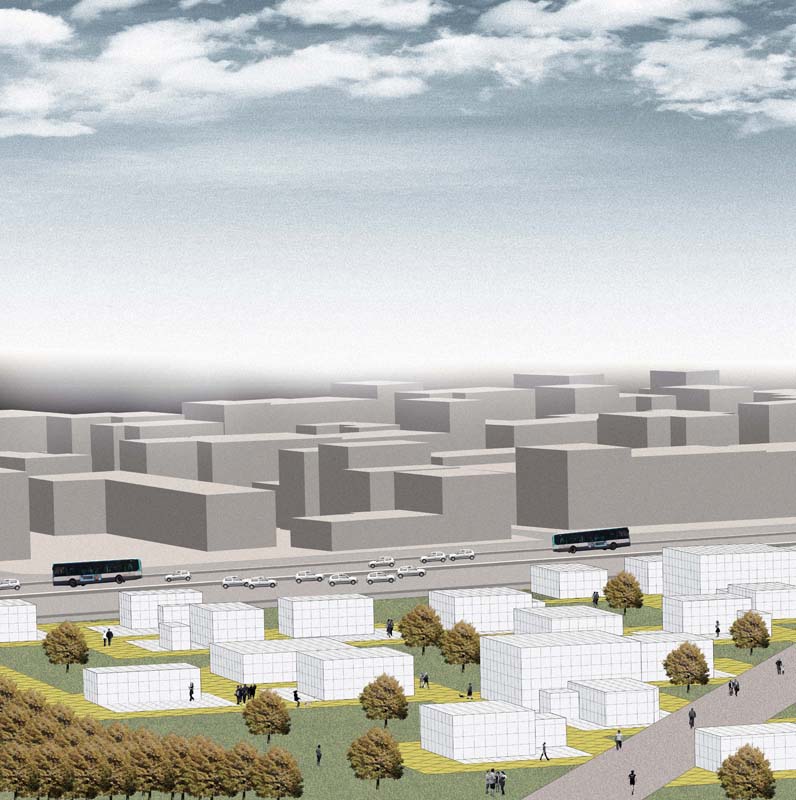

The archival refers to the concept of the archive,the collection of traces that serve for reading, recollection, or the documentation of events. The metropolitan park records them, stores them and keeps them.
The informative refers to information, freely transfers information to someone. The park consists of a whole of data, messages, contains and transmits knowledge for someone or something.
Our project aims to create a museum as it refers to these two concepts. The museum is developed on an area of 107 000 square meters, on a plot of land surrounded by Iera Odos st., Kifissou Avenue, Ploutonos st. and Orpheos st. We believe that the image of the museum, the containing and the content are elements of a consideration of the museum as a place of a comprehensive perception and experience.The image of the building as a public architectural project is an important element, functional and symbolic and often, as a monument, is a key formation core of the urban space. The scale of the area we have to manage, the program of the museum that will lead to the creation of the exhibits that will be collected, the museum as a place of contemporary reality and its participation as an active concern significantly determines the design of the project.
The scale in which the museum is being developed but also the planning basis which are used for its creation are considered as important to highlight an archeology of the present. The phase of the exhibition of metropolitan traces will not begin at the moment the museum facilities are created. The inhabitants of the metropolis of Athens will be notified of their creation and will be asked to inhabit the facilities for a specified period of time. Those are proposed to be inhabited without financial quid pro quo, the price, for those who agree to stay, will be the tracks that they will leave behind after the abandonment of the space of the museum.
Supervisors: Gavrilou Evelyn, Paniyiris Costis
Reference Number: 552
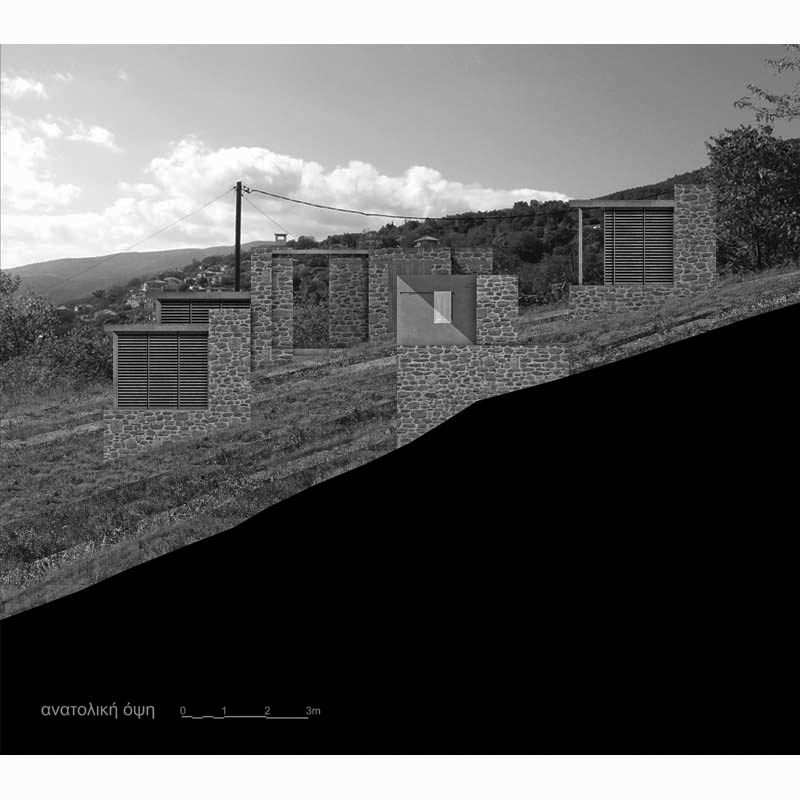



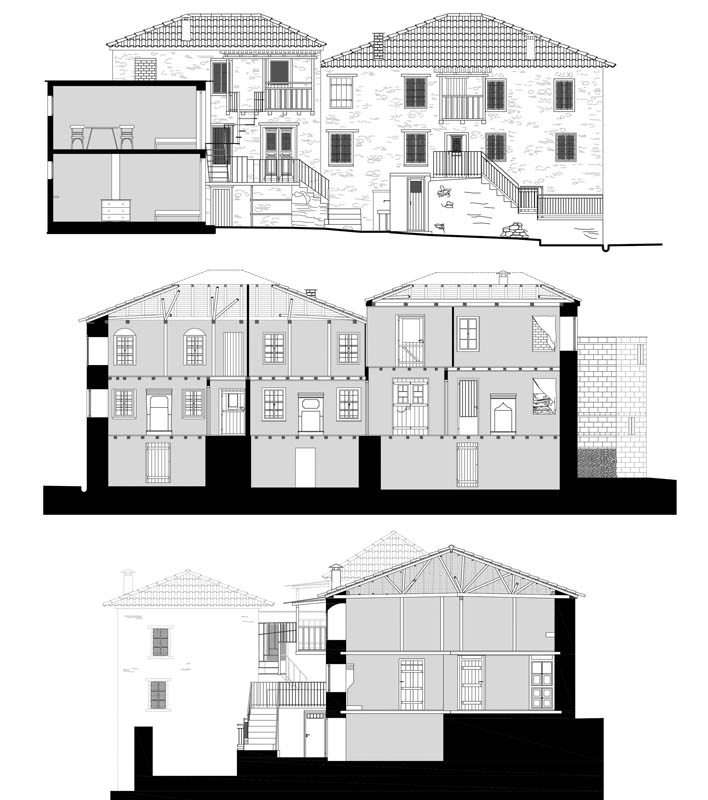

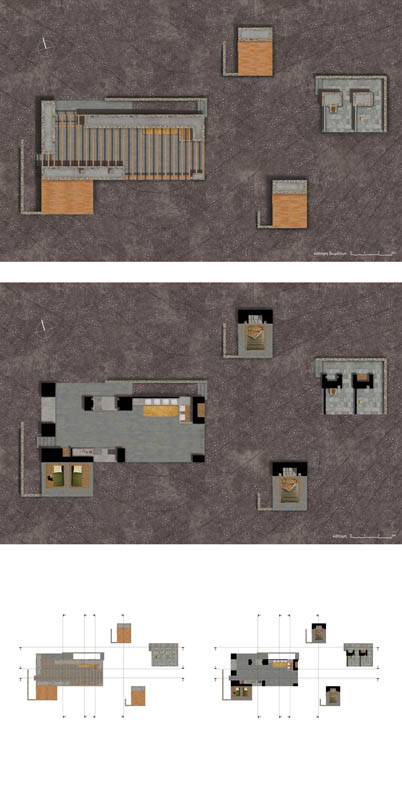

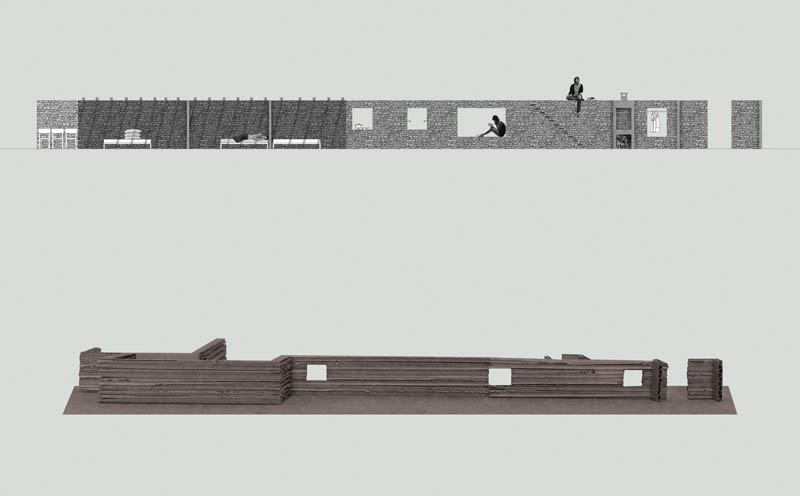

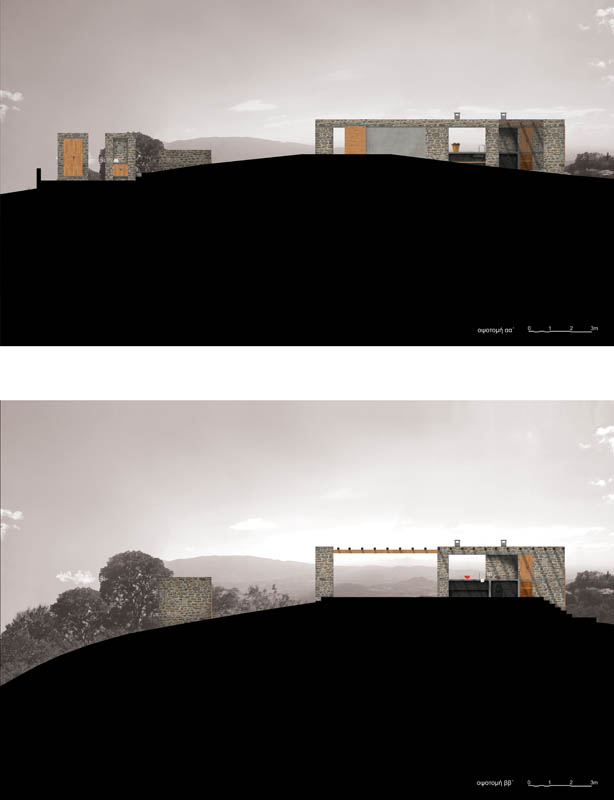

The attractiveness of the specifics of habitation in two old stone houses on the slopes of mountain Kissavos, which from the 80s are used as holiday homes, is the beginning of this thesis.
Features such as toggle in and out from one room to another, the habitation of the courtyard as an additional outdoor housing and the focus on some characteristic "corners" of the indoor and outdoor spaces, will be the "weft" to create a summer residence in another plot in the village.
As “warp” upon which this weft will be knitted, is used the theoretical schema of the unfolding of the floor plan. This schema comes from a study on "unfolding the inside out" on the landscape theory course.
The plan that will be used for the process of unfolding comes from the existing floor plan. The subsequent processing of the selected "unfolded plan" and the adaptation to the topography of the new plot, will lead to the creation of an outdoor summer habitation, a hybrid of holiday residence and camping. The arrangement of walls and niches opened up, will create outdoor “habitation corners” for the summer.
Supervisors: Gavrilou Evelyn, Lykourioti Iris
Reference Number: 540
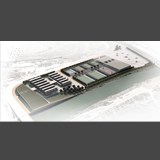

The thesis is about the establishment of a sports high school - sports center in the area where the old complex of Volos’ abattoirs was located. It’s an industrial complex, which today still remains abandoned in the urban fabric of the city of Volos. More specifically, the building complex is located in “Bourboulithra”, a degraded (even today) area, with minimal presence of craft industries and small residential character.
The construction of the old municipal abattoirs started in 1958 and was completed in 1961. Several years later, the building complex was declared inappropriate due to hygiene reasons. Volos’ abattoirs were moved to a new building, on the Athens Avenue, in the vicinity of Xerias (Lazou street).
The proposed intervention aims for the establishment of a school complex where the main school area is located in the center of the plot in place of the existing buildings of the abattoirs. Support spaces, such as the amphitheater and the library, are placed on the east side of the plot, while the sports facilities (gymnasium, outdoor fields and outdoor pool) on the west side of the plot. The design of the additional buildings was based on two parallel axes, allowing access to all the areas of the complex, as well as the independent functioning of the school and the sports center. As construction materials of the new buildings, met and glass will be used, resulting in lightweight structures, unlike the existing heavy structures of the abattoirs.
With the proposed intervention the upgrading, along with the further development of the area will be achieved.
Supervisor: Adamakis Kostas
Reference Number: 531


In the long lasting demand for the construction of a mosque for the religious needs of the Muslim population of Athens, this project stirs the discussion of the adaptability of the Islamic architectural element in the European landscape and especially in the particular Athenian environment. On the border between the incomplete residential area of Votanikos and the declining industrial zone, the urban-planning choice of the Islamic religious complex, offers a rejuvenating gateway for the spread of the adjacent phenomenon of Metaxourgeio even further west. In response to the constantly evolving composition of the Athenian Muslim community, the religious building complex is called upon to take a hostel-like nature on Islam. The basic principle of this option is the worship space compatibility with existing Muslim communities and their range of tradition but also to those that will potentially arise in the future. The architecture of Islam is being dealt with the intent of integration in three manners: the secular interpretation through the usage of the architectural typology of the far-west Athenian urban world, the drawing in relation to the city-plan traces of the adjacent city blocks and finally the supportive function as a provider of public welfare, of humanitarian and educational nature that will connect not only to the socially vulnerable group of Muslims but also the majority of the skeptical native community.
Supervisor: Stylidis Iordanis
Reference Number: 542
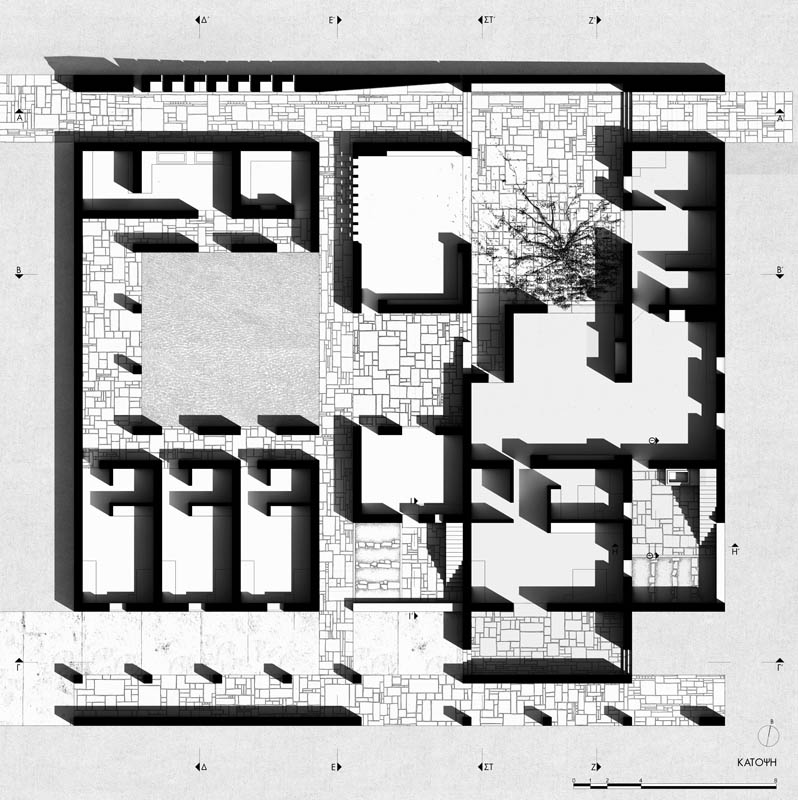



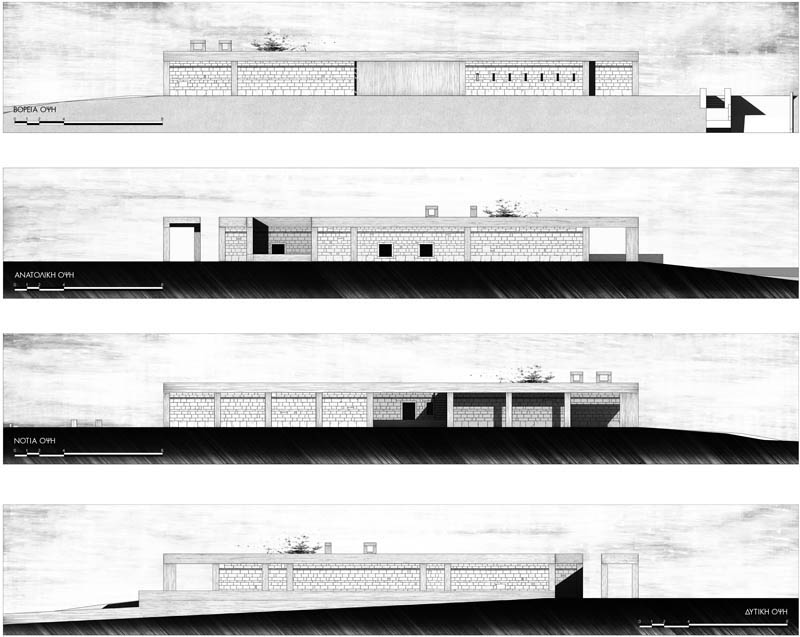

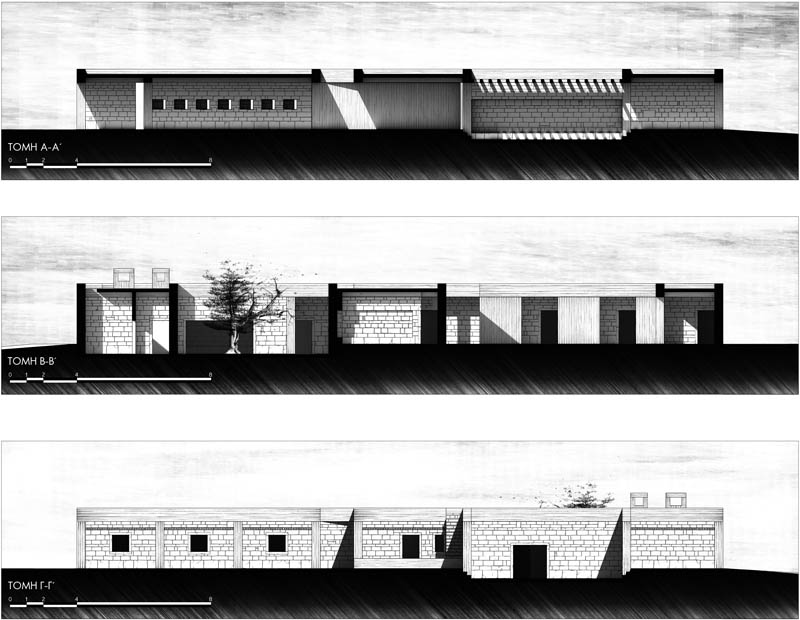

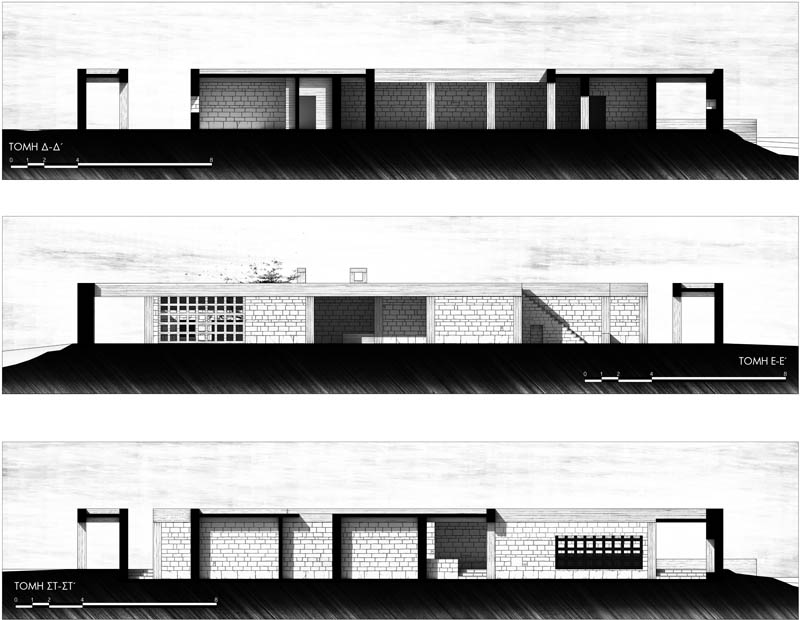

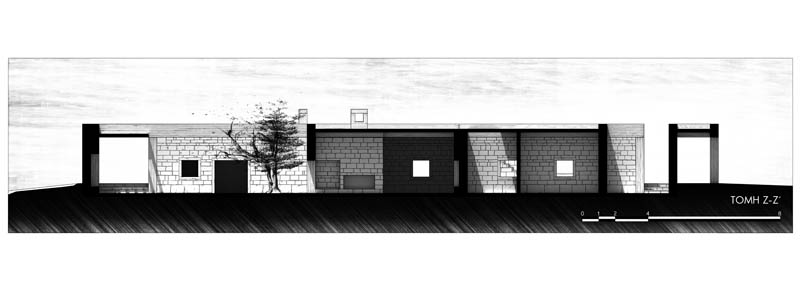

This diploma project concerns the design of a residence with three guesthouses for the permanent keeper of the archaeological site excavations on Rhenia Island.
The hitherto archaeological excavations revealed relics of an ancient settlement, burial monuments and shrines, tombs, altars, sarcophagi, scattered farm-houses of antiquity, material evidence of the past. However, to carry out systematic excavations some limited but basic building infrastructures are required.
The main axis in regard to composition consists of two courtyards around which the building facilities are developed. The main passage, which faces the sea, connects the two courtyards and functions as an exhibition space where the small findings of the excavations are presented in the built-in showcases along the way.
Overall, the proposal is divided into three zones-areas. The first zone-area consists of the central courtyard surrounded by the residence of the keeper, which is adequate for housing his family if needed. More specifically, the house includes two bedrooms, a kitchen, a living room and an office. The second zone is an intermediate, transitional space that houses the shared facilities – library, kitchen and a semi-outdoor space, which connects the two courtyards. In the third part there are the guesthouses and the laboratories for the scientific and technical staff as well as for the researchers of the excavations. In the same area is also located the second courtyard which serves as an outdoor space for processing and exhibiting the findings. Finally, the flat roof is accessible and from that height one can have full view of Delos Island.
Supervisor: Kanarelis Theoklis
Reference Number: 534


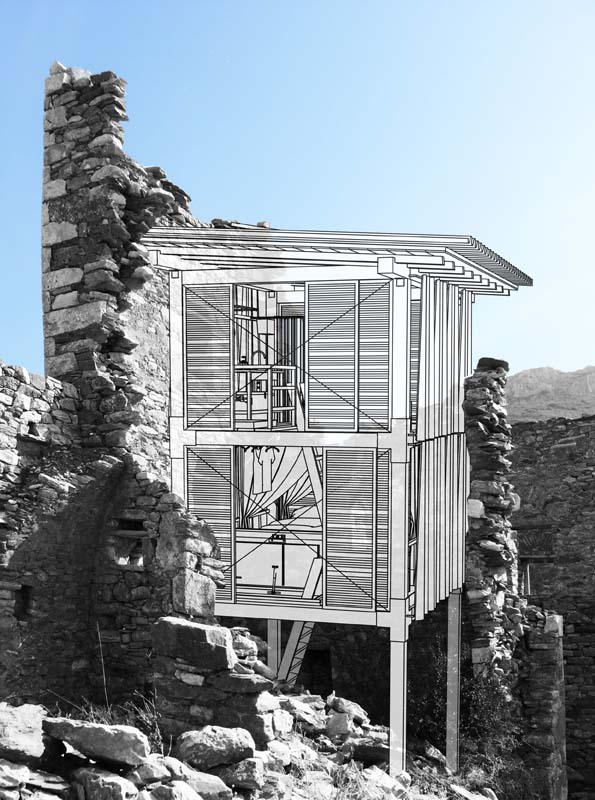

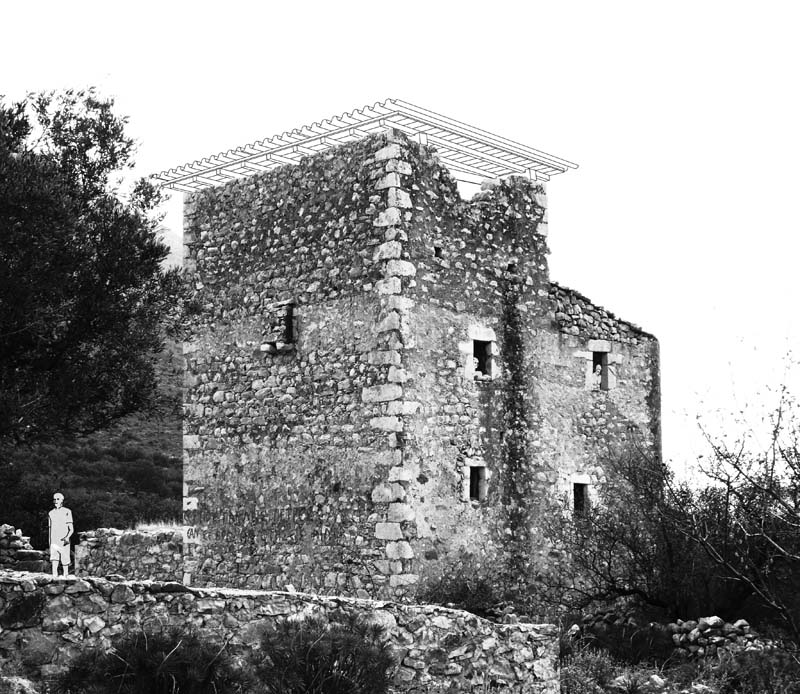

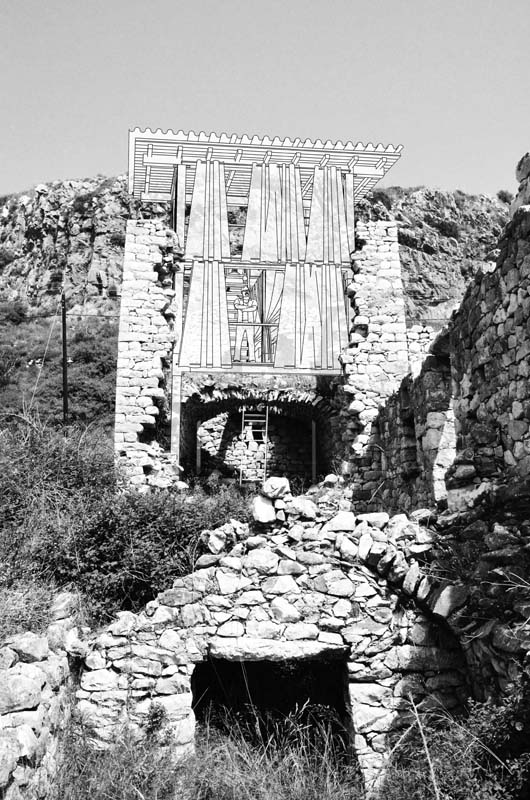

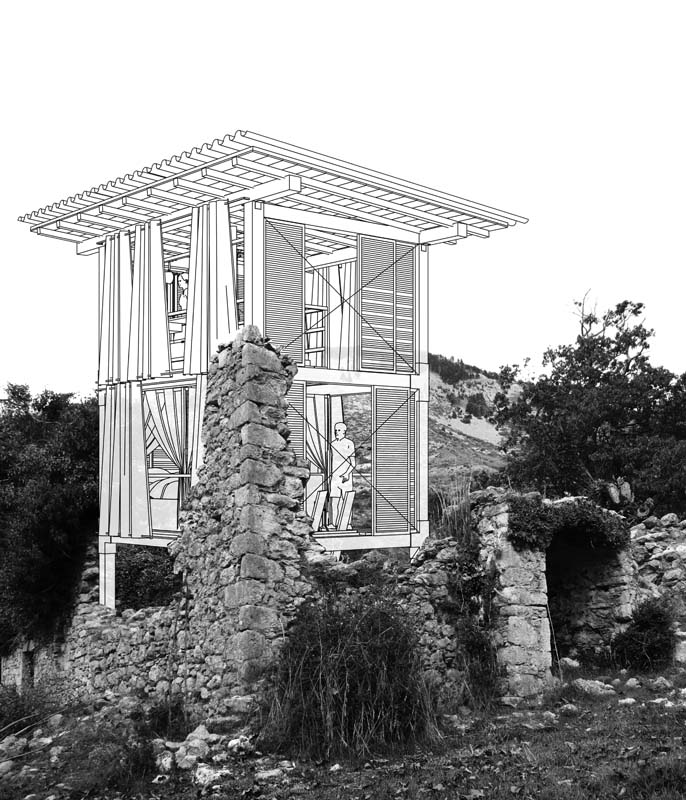

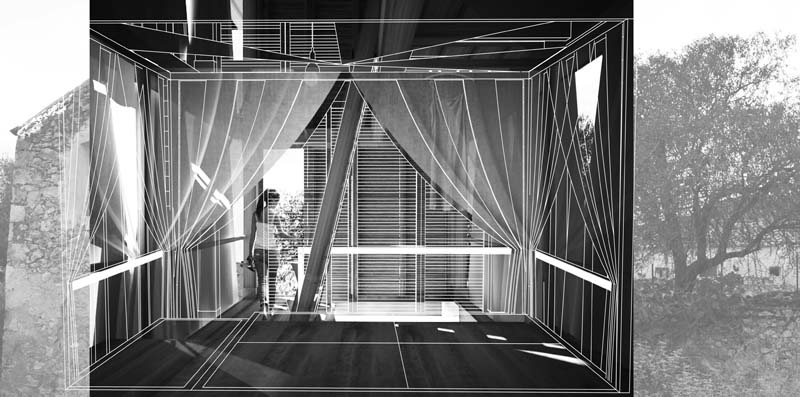

This final thesis “INHABITING THE RUINS OF MANI- experiments in survival maneuvers” searches for methods of intervening in the architectural remains of the countryside and how they could be inhabited and reused. Our field of research is Mani.
Geopolitical changes as well as socio-economical evolution have created and are still creating a huge surplus of buildings, a large “stock” of architectural remains in Greek rural areas.
Through the extensive research on the ruins of Mani and especially tower residencies we are looking for a way to save them. A wooden structure is created, the “MANITSA” which functions as a parasite in the existing tower residencies.
The notion of activating the ruins of tower residencies is decisive for their highlighting, it includes the personal experience of the user in the building and consequently with Mani, and it develops ties with the past.
Supervisor: Gavrilou Evelyn
Reference Number: 550

